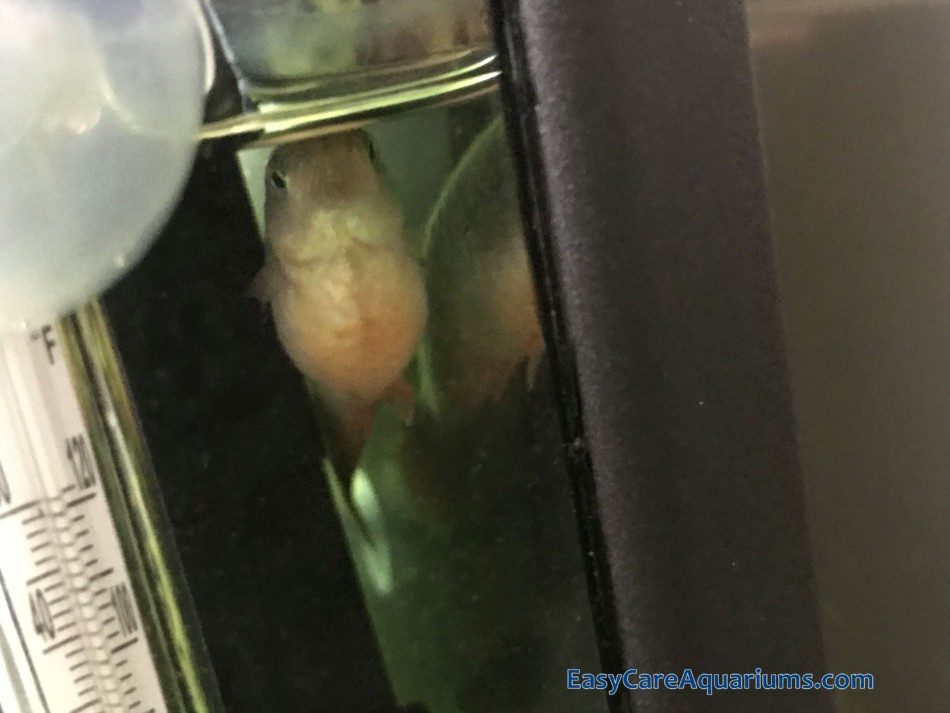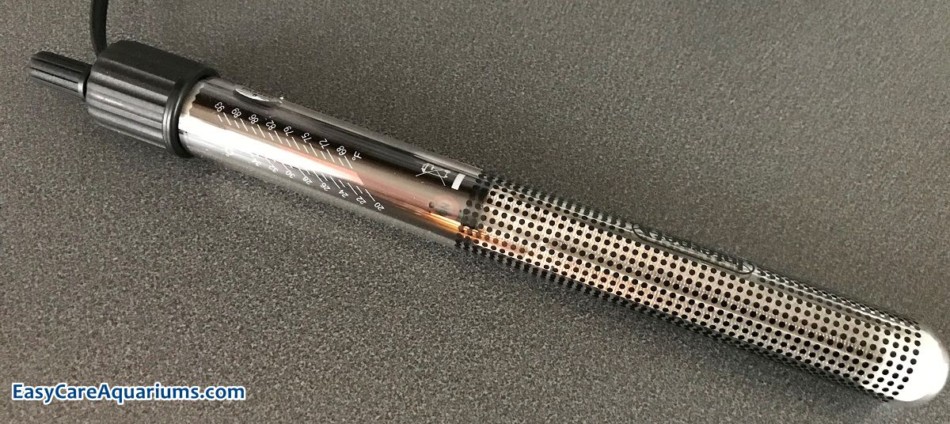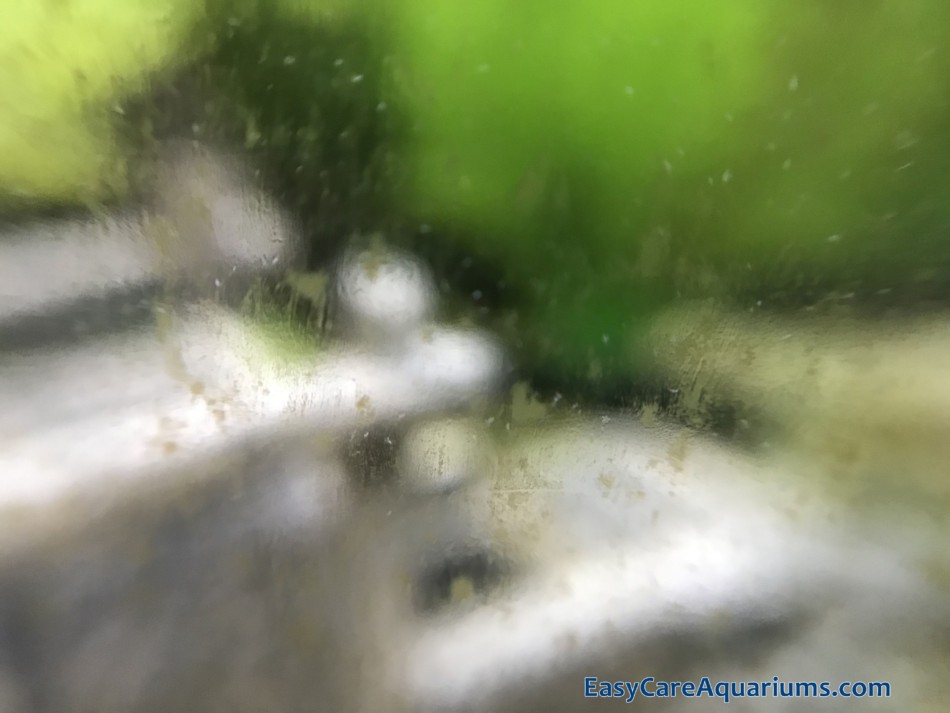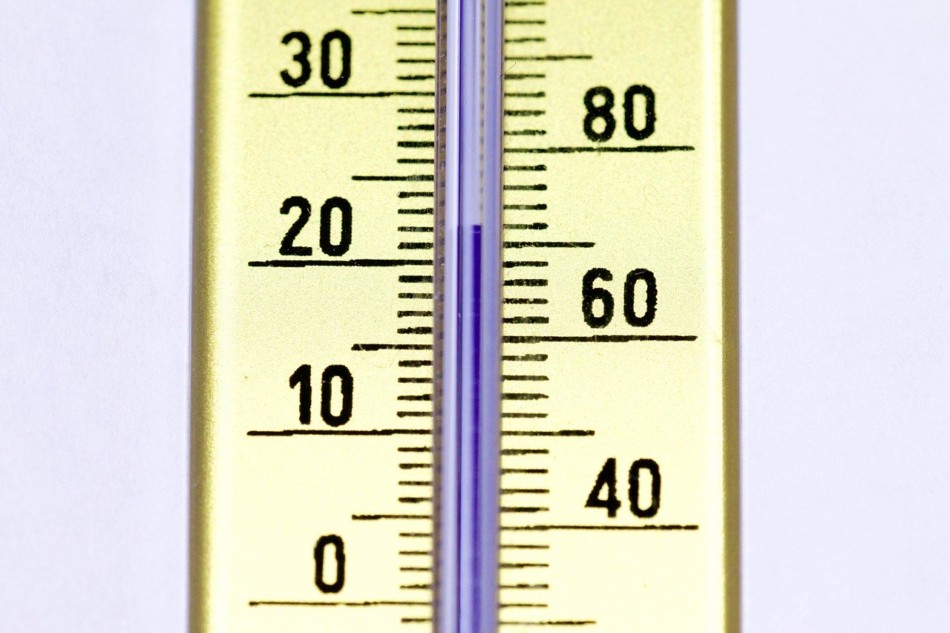This article may contain some affiliate links to products. The links provide me a small percentage of commission but do not cost you anything extra to use. (See full disclosure statement here ).
).
Even small changes in temperature can affect fish in an aquarium. And as fish don’t have the ability to regulate their own temperature they rely on us to notice when these fluctuations occur in their living quarters. So, how does temperature affect fish?
Fish can become stressed if subject to frequent large changes in temperature. If the aquarium is too cold, they can become lethargic and have a reduced appetite. When the tank is too warm, the fish can be more lively and therefore use up more oxygen.
The table below shows the ranges considered to be acceptable for different types of fish tanks.
| Type of Freshwater Tank | Temperature Range |
| Coldwater | Below 68°F (20°C) |
| Temperate | 57-75°F (14-24°C) |
| Tropical | 75-80°F (24-27°C) |
What Happens To Fish When The Tank Is Too Cold?
If an aquarium is too cold for the fish you are keeping you may find the fish become lethargic as their metabolism slows down.
You may see signs of a reduced appetite by way of leftover food.
Lower than usual temperatures can also cause stress in fish which could lower their immune system. This could result in illness or disease such as Ich, also known as White Spot. Ich is a common parasite found in fish tanks and is extremely contagious.
If a tank experiences a sudden drop in temperature due to water changes, an un-noticed fault with your heater, or just because of the weather in your area, then it shouldn’t be too much of a problem if quickly resolved.
Tropical fish feel the effects of a drop in temperature more than fish that are temperate in nature. But either way abrupt temperature changes can cause a problem.

If An Aquarium Is Too Warm How Are The Fish Affected?
Having too warm of an environment can cause more problems for fish than a cooler one. This is mainly because warm water contains less oxygen than cold water.
While some fish can tolerate small fluctuations in temperature quite well, others can’t. So even the smallest change will cause fish to become stressed. Stress in fish can lead to illness, diseases and ultimately lead to death.
When the temperature increases fish will usually become more lively and will therefore use up more oxygen. There could also be evidence of increased gill movement and gasping for air at the top of the aquarium. In extreme cases this could lead to suffocation.
Overheating in a tank can cause fish to become stressed which can lead to illness. Growth could be stunted or the fish’s colors could fade.
How Can You Control The Temperature Of A Fish Tank?
- When you initially set up a new aquarium you should give serious consideration to where you will position it. This will help minimise any upkeep you have to do as a result of fluctuations in temperature.
- Make sure your tank is away from windows with direct sunlight. Avoid heat or cooling sources such as heating or cooling vents, radiators and air conditioning units Also position the tank away from doors where there may be frequent draughts.
- A thermometer is a vital piece of equipment when it comes to monitoring the temperature of your tank. Without one you’ll have no idea if there’s a problem. There are several types of thermometers available that are suitable for aquarium use. I personally use a glass one with a suction pad
 (Amazon Link) to attach to the glass inside the tank. Others are digital with a probe
(Amazon Link) to attach to the glass inside the tank. Others are digital with a probe . Or can be as low tech as a sticker that attaches to the glass on the outside of the tank.
. Or can be as low tech as a sticker that attaches to the glass on the outside of the tank. - As you will regularly be performing water changes as part of your maintenance schedule you should try to ensure the new water closely matches the temperature of the existing water in the tank. I have temperate aquariums so I make sure that I leave my new treated water in a bucket for 24 hours beforehand. That way it’s at room temperature ready for when I carry out my tank maintenance.
- A heater is especially useful for preventing the temperature dipping too low in tropical fish tanks. It’s also useful for temperate tanks during the colder months of the year. Although whether it’s necessary in a temperate tank will depend on the climate of where you live.
- If you are keeping coldwater fish then a chiller
 (like this one found on Amazon) may be necessary in hot weather when the tank temperature naturally rises. These vary from a simple clip on-the-rim fan design, to a refrigeration unit suitable for tanks over 300 gallons (approx. 1100 liters). Prices for these vary from $12 (£9) to $1000+ (£750+)
(like this one found on Amazon) may be necessary in hot weather when the tank temperature naturally rises. These vary from a simple clip on-the-rim fan design, to a refrigeration unit suitable for tanks over 300 gallons (approx. 1100 liters). Prices for these vary from $12 (£9) to $1000+ (£750+)

Quick Fixes For Tanks That Are Overheating
- Turn the heater down if you have one. It’s probably best not to turn it off completely in case the temperature drops too drastically, or you forget to turn it back on again.
- Close the curtains to limit the effect of the heat from the sun (particularly if the tank is in direct sunlight)
- Turn off the aquarium light for a few hours as the lights can build up heat.
- Lift the lid. Although make sure none of your tank inhabitants can climb or jump out. I have snails and shrimp in my tanks. So I make sure to cover the escape route with a stiff nylon mesh sheet to prevent escapees.
- Use a fan to blow across the water surface.
- Add a sealed bottle of cold water. Don’t be tempted to add ice or ice blocks as the temperature may drop too rapidly and cause your fish and their tank mates to go into shock.
Make sure that you don’t drop the temperature by more than 2-3°F (1-1.5°C) every 4-5 hours to prevent your fish from becoming too stressed.
How Does Temperature Affect The Other Things In Your Aquarium?

Algae
A certain amount of algae growth happens naturally in most, if not all, tanks. But if the temperature of your tank is too warm you may find that the algae growth accelerates. There are other factors that affect algae growth, such as excess light and overfeeding your fish. And if you combine tank water that’s too warm with lots of light and excess feeding, it’s a recipe for algae.
Plants
There are lots of plants suitable for cold water, temperate and tropical aquariums. So when you’re choosing live plants for your aquarium it’s important to buy the plants best suited to your tank’s temperature. All plants do better if the temperature is kept pretty constant so it’s worth bearing this in mind when choosing plants for your fish tank.
Other Tankmates
If you are keeping other creatures in a community aquarium you need to consider how they may also be affected by temperature changes.
Shrimp for example are particularly sensitive to change. Whether that’s changes to the water quality, or water temperature. While your shrimp may become more active in high temperatures it’s likely to shorten their lifespan. If it’s too cold they can slow down to the point of dying.
Nerite snails are quite a hardy tankmate and can cope well in a wide variety of temperatures. But even they can be affected by an ammonia spike that may come as a result of a lack of oxygen caused by the aquarium being too warm.
Bacteria Levels
Good bacteria need oxygen to do their work. Less oxygen in the tank will prevent the bacteria from breaking down the fish waste and other debris effectively. This will lead to an ammonia spike which is dangerous, even deadly, to your fish and their tank mates. So if the temperature in your aquarium is too high and it’s reducing oxygen levels you can expect a nasty spike in ammonia.

